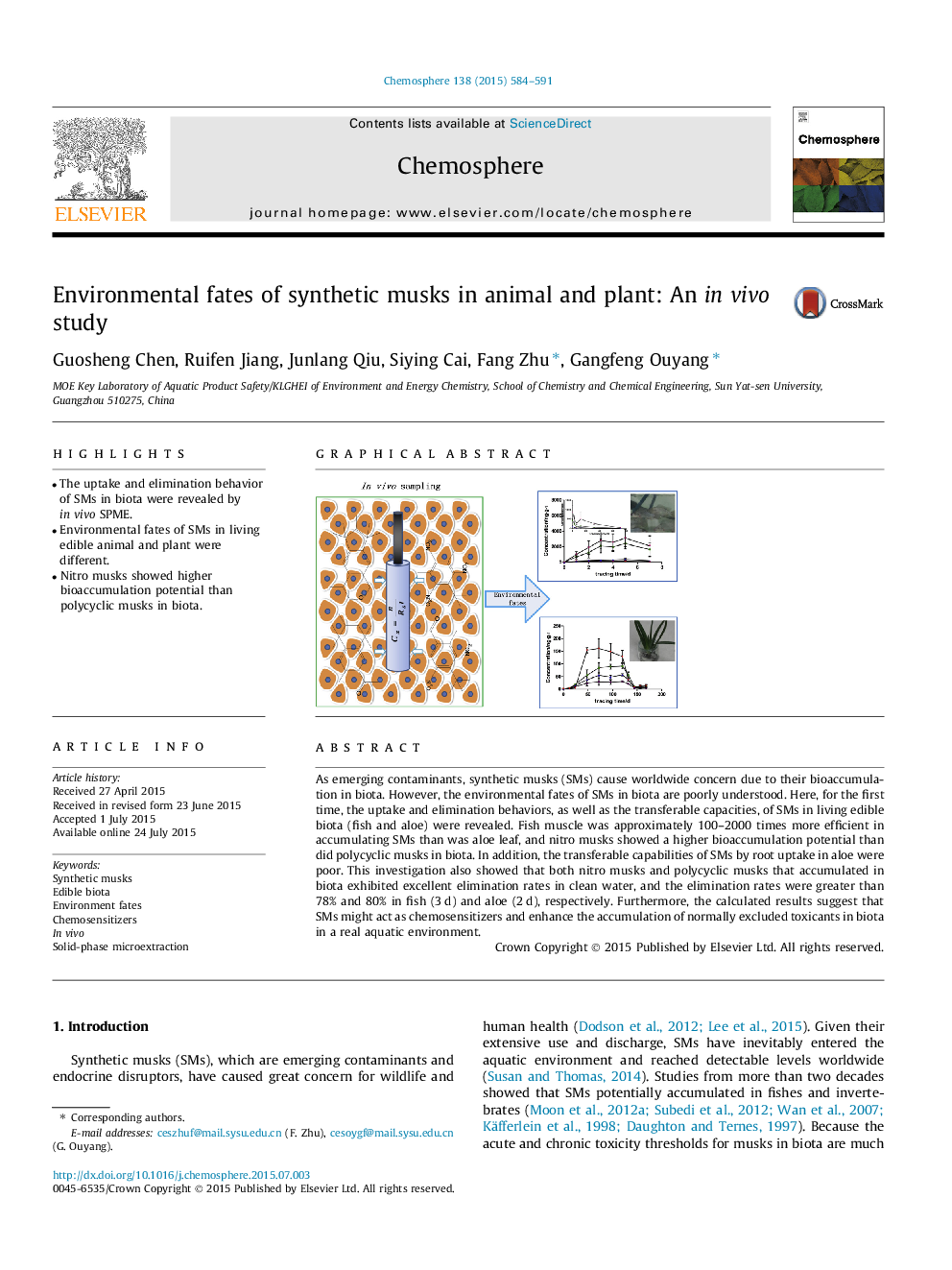| کد مقاله | کد نشریه | سال انتشار | مقاله انگلیسی | نسخه تمام متن |
|---|---|---|---|---|
| 6307542 | 1618833 | 2015 | 8 صفحه PDF | دانلود رایگان |

- The uptake and elimination behavior of SMs in biota were revealed by in vivo SPME.
- Environmental fates of SMs in living edible animal and plant were different.
- Nitro musks showed higher bioaccumulation potential than polycyclic musks in biota.
As emerging contaminants, synthetic musks (SMs) cause worldwide concern due to their bioaccumulation in biota. However, the environmental fates of SMs in biota are poorly understood. Here, for the first time, the uptake and elimination behaviors, as well as the transferable capacities, of SMs in living edible biota (fish and aloe) were revealed. Fish muscle was approximately 100-2000 times more efficient in accumulating SMs than was aloe leaf, and nitro musks showed a higher bioaccumulation potential than did polycyclic musks in biota. In addition, the transferable capabilities of SMs by root uptake in aloe were poor. This investigation also showed that both nitro musks and polycyclic musks that accumulated in biota exhibited excellent elimination rates in clean water, and the elimination rates were greater than 78% and 80% in fish (3Â d) and aloe (2Â d), respectively. Furthermore, the calculated results suggest that SMs might act as chemosensitizers and enhance the accumulation of normally excluded toxicants in biota in a real aquatic environment.
219
Journal: Chemosphere - Volume 138, November 2015, Pages 584-591